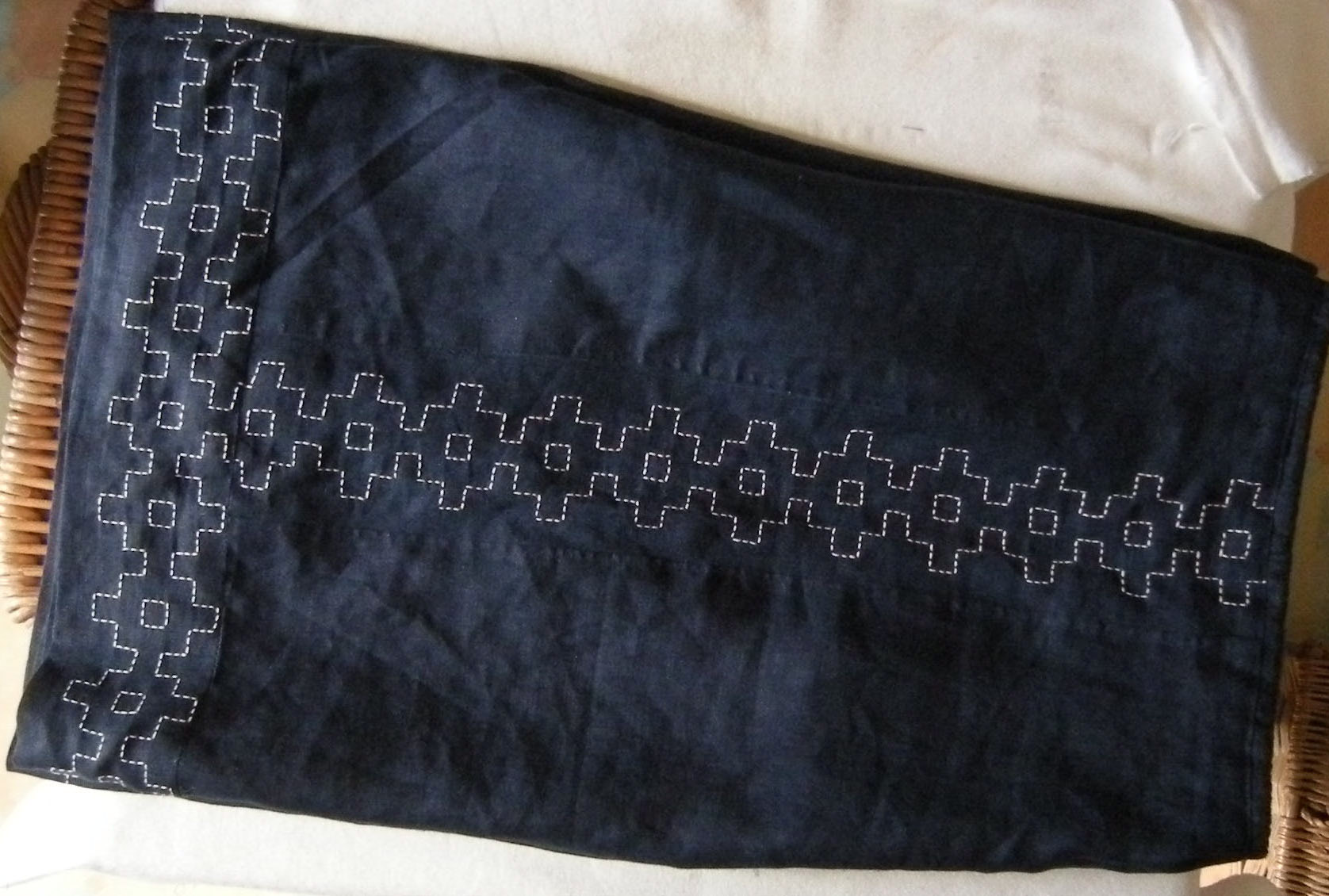
Sashiko is the traditional form of stitching from northern Japan and uses running stitch to create intricate designs – usually worked in white or cream thread on an indigo blue background.
Patterns were handed down by the women of the families in these fishing and farming communities – their sashiko designs created a unique and individual style. Sashiko was an artisan craft – invented to quilt together layers of fabric for warm clothing, recycling old and damaged textiles as part of the quilting, and also lending strength to working garments which were often subject to a great deal of wear and tear.
Sashiko developed over the two centuries between the early 17th and mid-19thcenturies (the Edo period) – probably beginning as someone repaired damaged clothes economically by using undyed thread on dark blue indigo cloth – then realising the decorative potential in the stitches they were making. At this time all fibres would have been hand spun, woven and dyed from natural fibres including linen and hemp. The thrifty communities would have continually recycled – cloth may have begun life as a garment, then been repurposed into bags and aprons, finally ending its life as a cleaning rag – every thread created during what would have been a very labour-intensive process was far too precious to throw away.
By the early 20th century Sashiko was accepted as a winter occupation when the usual heavy snowfall in the north of Japan meant that work outside was very limited. Sashiko skills were vital for young women and girls to acquire if they wanted to make a good marriage – learning Sashiko helped to develop patience and perseverance – essential for a farmer’s wife.

Vintage Sashiko consists of two or three layers of fabric, with the best on top, and even the most complicated designs are achieved with simple running stitch. Modern Sashiko may have only one layer of fabric or use polyester or cotton quilt wadding.
As part of the recycling process vintage Sashiko uses layers of old or worn fabric instead of wadding, so it’s much flatter than our western quilts. The stitches create a textured, flowing design sitting as they do on the fabric surface. The traditional indigo and white colours used give Sashiko work dramatic visual impact, though over time the creamy cotton thread often took on a pale ice blue tint due to the migration of the dye. These colours were used in response to Edo sumptuary laws which prevented the lower classes from wearing brightly coloured and patterned clothing. Ordinary people could use indigo, with patterns no larger than a grain of rice or with stripes no wider than the width of a straw. This may be the origin of the idea that Sashiko stitches must resemble grains of rice. It is also said to represent snow lying on the ground.
By the mid-20th century however, increased prosperity, commercialisation and the introduction of man made fibres meant that, like other artisan cultures across the world, the way country folk dressed began to change and the art of Sashiko declined. Many garments were discarded, or destroyed in other ways. In the 1970s though, as western-style quilting became more popular in Japan, the art of Sashiko stitching was rediscovered.
* Article originally appeared in Bustle & Sew Magazine, find out more HERE
WOW I love this work,wouldn’t mind having a go myself.
There is a Sashiko sewing machine made by Babylock. I own one, it is fun and fantastic working with one. The stich is so unique, it mimics a hand stitch.